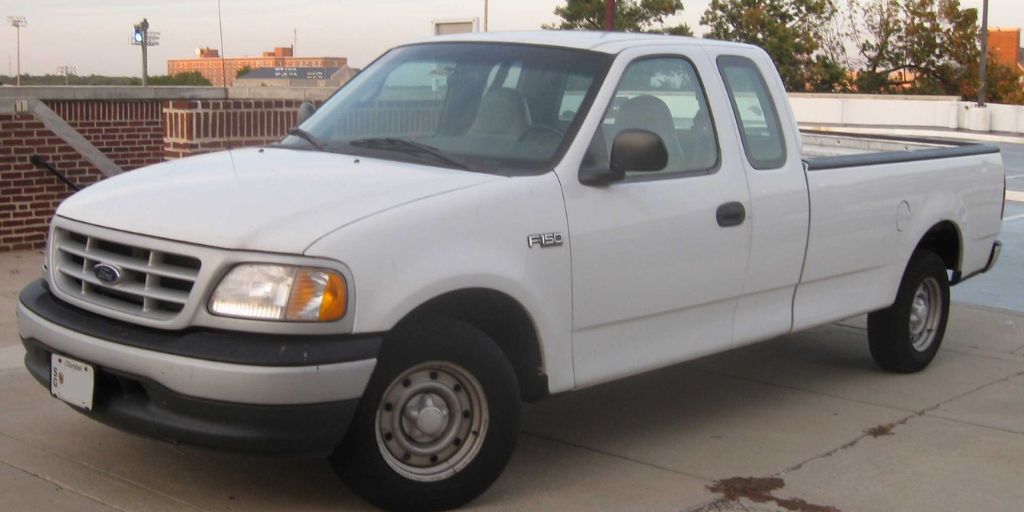Pickup trucks are more than just workhorses—they’re symbols of durability, self-reliance, and rugged engineering. For many owners, a truck isn’t just a tool; it’s a long-term investment that should last decades, not just years.
Some trucks deliver exactly that: classic machines that still start up strong today, hauling, towing, and working long past their expected prime. These are the legends you still see on farms, job sites, and back roads, proving that real quality doesn’t age out.
But not every truck lives up to that standard. In fact, some modern pickups that promised bold power and high-tech features have ended up in junkyards before their fifth birthday.
Poor design, weak drivetrains, or rushed production cycles turned them into cautionary tales for truck buyers everywhere.
This guide compares the very best with the very worst. First, we’ll spotlight five classic trucks that have stood the test of time, still running strong decades later.
Then, we’ll turn to five modern trucks that failed to live up to expectations, breaking down early and breaking owners’ trust.
Whether you’re a collector, a daily hauler, or someone shopping for a dependable used truck, this list highlights what to look for—and what to avoid—if you want your next truck to last.
Also Read: 5 Cars Rated Best for First-Time Buyers and 5 Giving New Drivers Fits
5 Classic Trucks Still Working Today
There’s something deeply satisfying about seeing an old truck still working hard—engine humming, bed scratched and dented, frame coated with a bit of rust, but still moving, hauling, and doing what it was built to do.
In a world of complex tech and disposable products, these trucks are the mechanical equivalent of reliability and grit. They weren’t built to be flashy. They were built to last.
Today’s trucks are packed with luxury features and turbocharged engines, but many of them can’t hold a candle to the durability and simplicity of older pickups.
These classics didn’t need digital screens or lane-keeping sensors—they relied on strong frames, overbuilt engines, and the kind of engineering that valued long-term toughness over short-term trendiness.
And the proof of their staying power is everywhere—from small towns and farms to construction zones and collector garages.
We’re writing about these trucks not just out of nostalgia, but because they represent true mechanical excellence.
They still get the job done—decades after rolling off the assembly line. Many owners report minimal repairs, high mileage reliability, and the kind of easy maintenance that’s nearly unheard of in today’s vehicles.
In this section, we’ll profile five classic trucks that are still going strong today—some over 30 years old, others approaching half a million miles.
These models have earned reputations for legendary toughness, and they serve as a blueprint for what truck buyers still want: a machine that works hard, lasts long, and doesn’t quit.
Whether you’re restoring an old pickup or hunting for a trustworthy used truck, these models have more than proven their worth—and they’re still doing the heavy lifting, day after day.
1. 1990–1997 Ford F-250 HD (7.3L IDI and Power Stroke Diesel)
Few trucks command the same level of respect as the 1990s Ford F-250 HD, particularly the versions equipped with the 7.3L IDI and later Power Stroke diesel engines.
Built during a time when trucks were engineered for pure function, this heavy-duty workhorse still earns its keep on farms, ranches, and tow yards across the country—even more than 25 years after production ended.
The pre-1994 models came with the 7.3L IDI diesel, a naturally aspirated or turbocharged indirect injection engine known for its simple, rugged design.
In 1994, Ford introduced the legendary 7.3L Power Stroke, a turbocharged direct-injection diesel developed by Navistar.
This engine quickly earned a reputation for being nearly indestructible. With routine maintenance, these trucks regularly surpass 400,000 miles, with many still in service hauling loads, plowing snow, and towing trailers.
What made this generation stand out wasn’t just the engine—it was the overbuilt frame, solid axles, and no-nonsense mechanical simplicity.
With fewer electronics and less dependence on fragile sensors or software, owners could perform most repairs themselves with basic tools.

That serviceability, combined with the engine’s bulletproof nature, made the F-250 HD a favorite among tradesmen, ranchers, and anyone needing dependable muscle.
Inside, the cab is spartan by modern standards—vinyl floors, crank windows, bench seats—but it’s built to take abuse.
While newer trucks aim to rival luxury SUVs, the old F-250 HD was about resilience, not refinement. That utilitarian philosophy is part of why so many are still on the road.
We’re including this truck not just because it still works—it’s because it has become a symbol of what durability used to mean in the truck world.
In an age where many modern pickups struggle with electronics and turbo complexity after 100K miles, the F-250 HD reminds us that simpler, heavier, and tougher often wins the long game.
If you come across a 1990s F-250 HD with the 7.3L engine, don’t let the mileage scare you. If it’s been taken care of, odds are it’ll keep running longer than many trucks half its age.
2. 1989–1993 Dodge Ram W250 Cummins
If there’s one truck that changed the heavy-duty pickup landscape forever, it’s the 1989–1993 Dodge Ram W250 with the 5.9L 12-valve Cummins diesel engine.
Before this truck, diesel pickups were sluggish and limited mostly to fleet use. But when Dodge paired a solid, old-school Ram chassis with a bulletproof inline-six turbo diesel borrowed from the commercial world, they created an icon—and a machine that refuses to retire.
The 5.9L 12-valve Cummins engine is arguably one of the most durable diesel engines ever put into a pickup truck. It uses a cast iron block and head, mechanical fuel injection, and no electronic engine controls whatsoever.
That simplicity means minimal failure points—and maximum longevity. It’s not uncommon to see these engines run well past 500,000 miles with basic maintenance. Some owners have even hit a million miles with original blocks and heads still intact.
The W250 came with a solid front axle, leaf springs, and a no-nonsense drivetrain—making it extremely rugged, especially in 4×4 form.
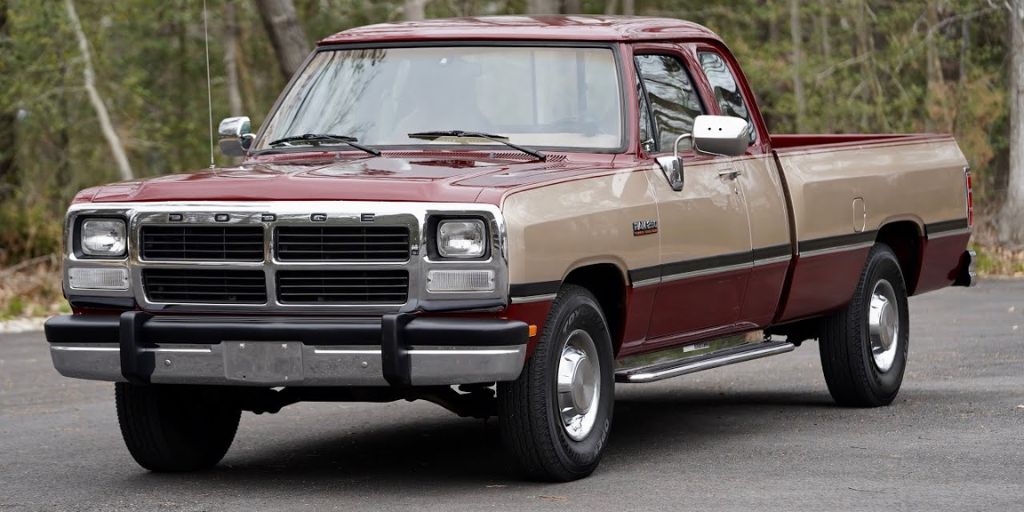
The Getrag 5-speed manual or TorqueFlite automatic transmissions, when maintained, were solid matches to the Cummins’ torque-heavy personality.
Even in stock form, the truck was a towing beast. And with light tuning, it could haul with ease and reliability unmatched by many modern trucks.
Inside, the cab was basic—straight bench seats, old-school HVAC sliders, and manual windows. But the bones were strong, and the simplicity makes restoration easy today.
Rust protection wasn’t great, so finding a clean body can be a challenge, but the drivetrain almost always outlives the sheet metal.
Why does this truck still matter? Because it introduced long-haul diesel toughness to the average truck buyer, and it did so with remarkable reliability.
It became a legend in the RV, construction, and farming communities for a reason—it started the Cummins craze, and decades later, many of these trucks are still earning their keep every day.
We’re including the Dodge Ram W250 Cummins because it’s more than a truck—it’s a mechanical milestone that redefined what diesel pickups could do.
It’s not rare to see one still pulling trailers or hauling tools, long after newer trucks have been retired. If you want to see what lasting power really looks like, look no further.
3. 1988–1998 Chevrolet C/K 1500 (GMT400)
Mention “OBS Chevy” (Old Body Style), and you’ll instantly spark recognition among truck enthusiasts, mechanics, and weekend warriors alike.
The 1988–1998 Chevrolet C/K 1500, built on the GMT400 platform, is one of the most iconic and enduring half-ton pickups ever made.
Its sleek-for-the-time styling, solid engineering, and mechanical simplicity make it a truck that’s still working—and often still looking great—30 years later.
What set the GMT400 series apart was Chevrolet’s shift to modern truck construction without losing old-school toughness. The frame was beefy, the ride quality was improved over older square-body Chevys, and the truck offered a broad range of engine options.
The most reliable—and most common—was the 5.7L V8 (350 small-block), a near-bulletproof engine that routinely pushes past 300,000 miles with basic care.
Even the base 4.3L V6 proved surprisingly durable, while the 6.5L diesel offered torque for towing with better-than-average longevity.
Pair any of those with the 4L60E or 4L80E transmissions, and you had a powertrain combo that just worked. These trucks were easy to maintain, cheap to repair, and built to be used—every day, under load, without complaint.
The C/K 1500s earned their reputation among tradesmen, landscapers, and farmers who needed reliable tools.
And because the engine bay is massive and parts are everywhere, they’ve become a favorite for home mechanics and restorers alike. Add in rust-resistant southern or western examples, and you’ve got an ideal platform that’s both nostalgic and usable.
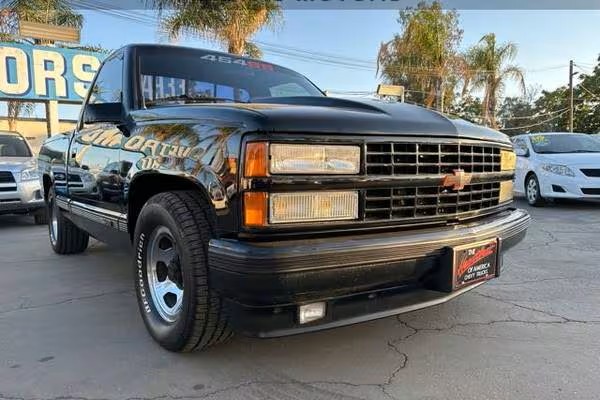
Inside, the trucks were basic but thoughtfully laid out. Comfortable bench seats, intuitive controls, and easy-to-read gauges made them user-friendly for long days behind the wheel.
Today, plenty of GMT400s are still working as daily drivers, tow rigs, or shop trucks—many with original drivetrains still ticking.
We’re including the Chevrolet C/K 1500 because it represents the sweet spot between old-school toughness and modern refinement. It’s a truck that found its way into driveways across America—and stayed there, often for decades.
If you see one rolling by with faded paint and dented bumpers, don’t be fooled: it’s probably on its second or third life, still doing exactly what it was built to do—work.
4. 1995–2004 Toyota Tacoma (1st Gen)
When it comes to compact trucks with legendary durability, the first-generation Toyota Tacoma stands in a league of its own.
Built from 1995 to 2004, these trucks are renowned for their mechanical simplicity, off-road capability, and uncanny ability to survive harsh use—even decades later.
Unlike many domestic trucks of the same era that focused on raw size and V8 power, the Tacoma was all about efficiency and endurance.
Offered with a range of engines—including the ultra-reliable 2.7L 4-cylinder and the rugged 3.4L V6—this truck proved that you didn’t need massive horsepower to build something that lasts.
Owners routinely report these engines clearing 300,000 miles or more, often with minimal repairs beyond regular maintenance.
The first-gen Tacoma came with robust body-on-frame construction, excellent ground clearance, and a drivetrain that included optional 4WD with manual locking hubs—a setup that off-road enthusiasts still praise.
These trucks have been taken through deserts, across jungles, and over mountains, and they just keep going. Many have survived years of daily commuting, trail duty, and light commercial use without ever seeing a tow truck.
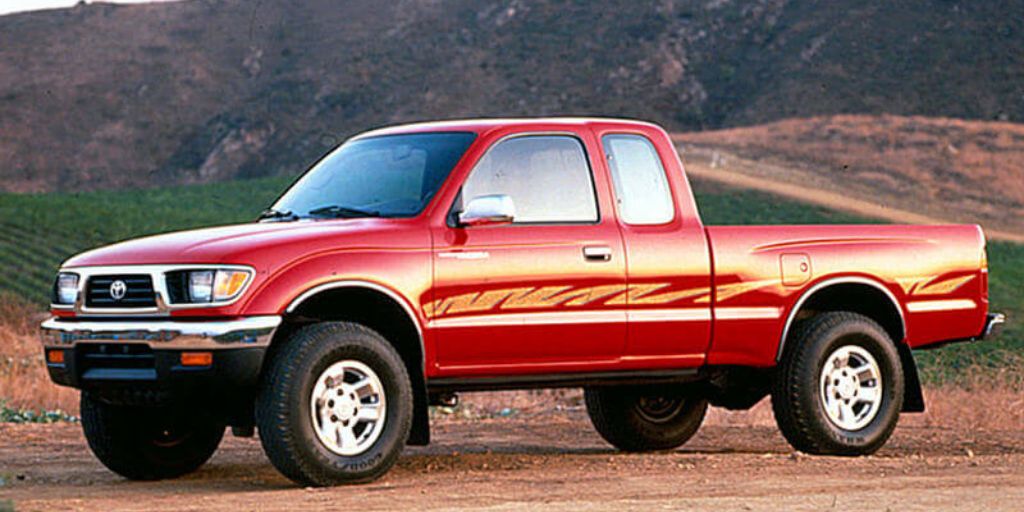
Another point in the Tacoma’s favor is its build quality. Though the interiors are basic, they’re hard-wearing and thoughtfully laid out.
Simple HVAC knobs, a clear dash, and durable upholstery make the cab feel like it was designed for real-world abuse. And since these trucks lack complex electronics, they’re easy to repair and modify, keeping them on the road long after newer trucks hit the scrapyard.
Perhaps most impressive is how well these trucks retain their value. Even today, high-mileage Tacomas in good condition command premium prices on the used market, and it’s easy to see why.
They’re dependable, versatile, and compact enough to be useful in urban settings, yet tough enough to hold their own on rugged trails or worksites.
We’re including the first-gen Tacoma because it’s one of the few classic compact trucks that’s still being driven hard every day—and not just as a collector’s item.
Whether hauling mulch, climbing fire roads, or cruising through town, these trucks have proven that size doesn’t matter—reliability does. And the Tacoma delivers that in spades.
5. 1973–1987 Chevrolet C/K Series (Square Body)
When it comes to vintage trucks that still work for a living, the 1973–1987 Chevrolet C/K Series, often referred to as the “Square Body,” is the ultimate symbol of durability and DIY simplicity.
Built during an era when steel was thick, engines were basic, and design was function-first, these trucks remain a beloved fixture on farms, ranches, and job sites across the country—over 40 years later.
The Square Body C/K was available in every configuration imaginable: single cab, crew cab, long bed, short bed, 2WD, 4WD, and with a wide selection of bulletproof engines.
The most enduring combo was the 5.7L (350ci) small-block V8 paired with a TH350 or TH400 automatic transmission or a SM465 manual, all of which are legendary for their mechanical toughness. These drivetrains are still running strong in original trucks—and frequently swapped into others.
What made the Square Body so beloved wasn’t just its reliability, but its serviceability. The engine bay was spacious, parts were cheap and widely available, and repairs were straightforward.
From backyard mechanics to seasoned techs, everyone knew how to keep these trucks alive with little more than hand tools and a Chilton manual.
Rust was an issue in salt-heavy regions, but in dry climates, many examples retain their original bodies and frames.
Even where rot occurred, these trucks were so modular and simple that replacing panels or floorboards was an achievable weekend project.
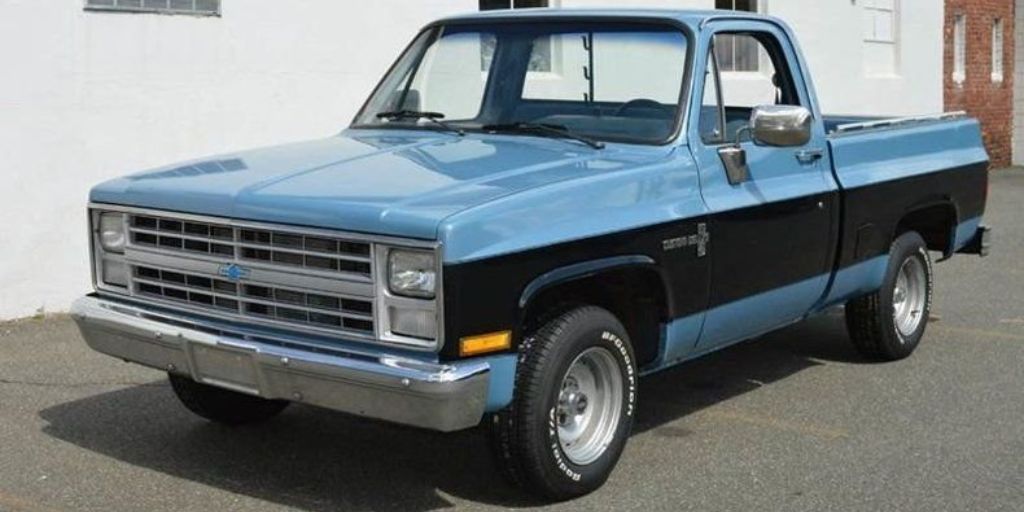
Inside, the trucks were utilitarian but comfortable for their time. Vinyl bench seats, analog gauges, and simple controls meant fewer things could break—and fewer distractions while driving. These trucks weren’t built to impress; they were built to work every day, year after year, without complaint.
We’re including the Square Body C/K Series because it’s one of the few classic trucks that you’ll still see pulling trailers or loaded with lumber instead of sitting in a collection.
It’s not rare because it was built in huge numbers—and it’s not obsolete because it still does the job. For those who value raw toughness, mechanical simplicity, and American truck heritage, the Square Body is as good as it ever was.
5 That Didn’t Last 5 Years
Not all trucks are built to last—some barely make it through the warranty period. While the idea of a brand-new pickup promises years of dependable service, certain models have proven that a modern badge, aggressive styling, and a long spec sheet don’t always equal reliability.
For buyers expecting durability and longevity, these trucks instead delivered breakdowns, recalls, mechanical disasters, and massive depreciation—sometimes all within the first 50,000 miles.
It’s one thing for a truck to need maintenance; that’s expected. But what we’re highlighting here are trucks that suffered catastrophic issues early in their lives, often requiring major engine or transmission work before the five-year mark.
From rushed redesigns and flawed engineering to poor build quality and unreliable tech, these vehicles gained a reputation not for how long they lasted—but how quickly they failed.
We’re writing about these trucks not to kick them while they’re down, but to give shoppers a clear picture of what to watch out for, especially in the used market.
Some may be tempting due to their low resale values, flashy features, or full-size appeal at a compact price—but what seems like a bargain today could quickly become a financial black hole tomorrow.
In this section, we’ll profile five trucks that earned widespread owner frustration, low reliability ratings, and early retirement. If you value uptime, dependability, and resale value, these are the models that failed to earn their keep—and might just fail you too.
1. 2006–2008 Dodge Ram 1500 (5.7L HEMI and 4.7L V8)
The 2006–2008 Dodge Ram 1500 arrived with bold styling, big V8 power, and a rugged presence that appealed to both work-truck buyers and weekend warriors.
With available engines like the 5.7L HEMI and 4.7L V8, it promised strength and speed—but it also delivered something less advertised: a shocking tendency to break down early and often.
Let’s start with the 4.7L V8, which earned a reputation for sludge build-up, overheating, and early failure—often well before 100,000 miles. Many of these engines failed because they couldn’t tolerate neglect or even moderate lapses in oil change intervals.
Add to that a cooling system that struggled under heavy loads, and you had a ticking time bomb in what was supposed to be a dependable powertrain.
The 5.7L HEMI wasn’t immune either. Owners reported lifter failure, camshaft wear, and cylinder misfires, particularly in higher-mileage examples. These weren’t minor repairs—full engine rebuilds were common, and costs could exceed $6,000 depending on the damage.
Even with diligent care, issues like exhaust manifold bolts snapping and valve train ticking plagued the engine, sometimes as early as 50,000 miles.
The problems didn’t end under the hood. The 5-speed automatic transmission, especially when paired with the HEMI, was known for harsh shifting and early failure.
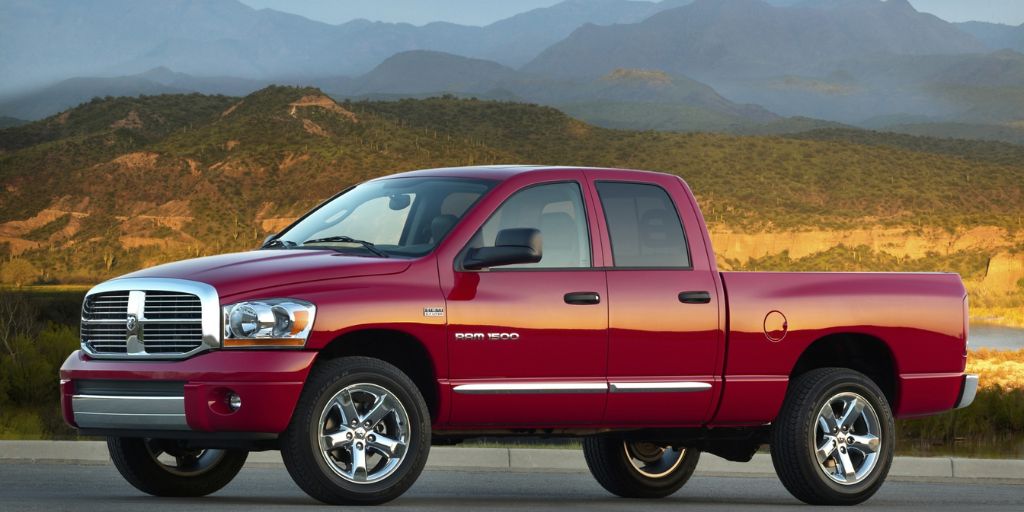
Suspension components like ball joints and control arms wore out fast, leading to poor alignment and uneven tire wear.
Throw in electrical glitches, premature rust (especially around the rear fenders), and failing window regulators, and you had a truck that could feel worn out just a few years after purchase.
We’re including the 2006–2008 Ram 1500 on this list not because it lacked capability—it had plenty—but because its mechanical and quality issues surfaced early and often, cutting short its potential lifespan.
While some owners managed to nurse these trucks along, many others faced major repairs within just 3 to 5 years of ownership.
Today, many of these Rams are dirt cheap on the used market—and for good reason. The costs to keep them running can quickly eclipse their value. For buyers who want reliability, this is one full-size truck that aged faster than it should have.
2. 2004–2006 Nissan Titan (1st Gen, Early Models)
When Nissan launched the Titan in 2004, it was their first real attempt to take on the American full-size truck market—and it started with promise. Bold styling, a strong-sounding 5.6L V8, and a muscular stance gave it showroom appeal.
But under the surface, the first-generation Titan—especially the early 2004–2006 models—was plagued with reliability issues that doomed it from the start.
Let’s begin with the drivetrain. The 5.6L V8 engine had decent horsepower, but it suffered from exhaust manifold cracking as early as 30,000–40,000 miles.
Replacing the manifolds was a labor-intensive and expensive job, especially because the problem was recurring—even after repairs. Owners often dealt with ticking noises, lost power, and declining fuel economy.
The rear differential, however, was the Titan’s Achilles’ heel. Known to explode under towing stress or spirited driving, it became the poster child for early Titan failures.
Nissan did little to address the issue in the first few years, and many owners reported complete diff failure before hitting 60,000 miles—an unforgivable flaw in a supposed work truck.
Transmission issues also surfaced, especially when the truck was used for heavy-duty tasks. Rough shifts, slipping, and premature wear were not uncommon, leaving owners with costly rebuilds or replacements in under five years.

Add in problems with the braking system—such as warped rotors and inadequate stopping power—and the Titan quickly went from “competitor” to “liability.”
The Titan’s interior didn’t help matters. Cheap plastics, fragile trim, and frequent electrical problems made the cabin feel dated and unreliable almost immediately.
From failed power windows to faulty gauges and malfunctioning sensors, the Titan’s tech aged poorly—sometimes within the first two years.
We’re including the early Nissan Titan because it’s a classic case of ambition exceeding execution.
Nissan had the right idea—create a bold, V8-powered truck for American buyers—but the early engineering simply didn’t hold up. Many Titans from this era didn’t even make it to 100,000 miles without major component failures.
Today, they’re mostly found on classifieds with warnings like “needs rear end” or “engine light on”, serving as reminders that full-size truck capability means nothing without durability to back it up.
3. 2005–2008 Ford F-150 (5.4L Triton V8)
The 2005–2008 Ford F-150 was one of the best-selling trucks of its era, thanks to its rugged styling, roomy interior, and a long-standing reputation for capability.
But underneath all that brand confidence lay a mechanical disaster, especially in models equipped with the 5.4L Triton V8—a powerplant so problematic that it sidelined thousands of trucks long before their time.
At the heart of the issue was the 3-valve 5.4L Triton engine, which suffered from cam phaser failure, timing chain issues, and spark plug disasters.
Cam phasers—part of Ford’s variable valve timing system—would rattle, misfire, or fail entirely, often leading to rough idle and stalling. Replacing them required tearing into the engine and could cost $2,000–$4,000, a massive bill for a truck only a few years old.
Even worse were the infamous spark plug issues. The factory plugs were known to either break off inside the cylinder head during replacement or launch themselves out entirely, destroying threads and leading to costly repairs.
For a truck that was supposed to work hard and tow confidently, this kind of fragility was unacceptable—and many owners found themselves stranded after only moderate mileage.
The 4-speed automatic transmission was another sore spot. While not as catastrophic as the engine, it often suffered from shifting issues and early wear, especially under load.
Many F-150s also had weak front suspension components and brake rotors that warped quickly under normal use, adding to the growing list of frustrations.

Inside, the truck was roomy and comfortable, but plagued with electrical gremlins. Owners reported issues with door sensors, power window failures, and faulty climate control units—all before reaching the 5-year mark.
Combined with poor fuel economy and frustrating under-hood access, the 5.4L F-150 became known as a mechanic’s best friend—and an owner’s worst nightmare.
We’re including this truck because it’s one of the clearest examples of a manufacturer trading long-term reliability for short-term sales.
While later F-150s would recover, the 2005–2008 Triton-powered models remain one of the most regrettable full-size truck purchases of their time.
If you see one on the used market that “just needs a timing job,” you’ll know why it’s so cheap—and why it didn’t last five years for the last owner.
4. 2015–2017 Chevrolet Colorado (First Years of Second Gen)
When Chevrolet revived the Colorado in 2015, it aimed to redefine the midsize truck category.
With modern styling, a quiet ride, and promising engine options—including a fuel-efficient 2.5L I4, a capable 3.6L V6, and eventually a diesel—the second-gen Colorado seemed poised for success.
Unfortunately, the earliest models from 2015 to 2017 proved to be plagued with serious reliability concerns that often surfaced well within the first 3 to 5 years of ownership.
One of the most significant problems came from the electrical system. Owners reported frequent glitches with the infotainment system, screen blackouts, Bluetooth malfunctions, and even complete electrical shutdowns.
Several trucks experienced phantom warning lights or dash systems failing altogether. For many, these weren’t just annoyances—they were driveability issues that required dealership visits and repeated software flashes that rarely fixed the problem for good.
The 8-speed automatic transmission paired with the 3.6L V6 was another major issue. It suffered from hard shifting, gear hunting, and delayed engagement.
Many trucks had transmission fluid flushed under a technical service bulletin (TSB), but the fix wasn’t always effective. In some cases, owners required full transmission replacements—all before hitting 60,000 miles.
The engine itself, particularly the V6, wasn’t exempt from trouble either. Valve train noise, random misfires, and timing chain tensioner problems showed up prematurely.

While the diesel variant was more reliable, it came with its own challenges—expensive emissions-related repairs and diesel exhaust fluid (DEF) system glitches, which were expensive and difficult to fix under warranty.
Interior quality also drew complaints. Cheap plastics wore out fast, rattles developed early, and seat comfort was subpar for long drives.
The Colorado may have looked like a premium alternative to the Tacoma or Frontier, but real-world durability told a different story.
We’re including the 2015–2017 Chevrolet Colorado because it serves as a warning: a modern badge and slick design don’t guarantee long-term reliability.
These trucks left many owners disillusioned, trading in what should have been a decade-long companion for something more dependable—often well before the five-year mark.
If you’re shopping for a used Colorado, skip the first years of this generation unless you have detailed service records—and a backup ride.
5. 2001–2005 Toyota Tundra (4.7L V8 with Frame Rust Issues)
The first-generation Toyota Tundra, particularly from model years 2001 to 2005, had the potential to be a long-lasting, reliable truck. And in many ways, it was. The 4.7L i-Force V8 was one of the most dependable engines Toyota ever made.
The transmission was smooth, the interior was comfortable, and the truck offered excellent build quality—except for one catastrophic flaw: frame rot.
For a truck that should have lasted decades, the premature and aggressive frame rust was a devastating Achilles’ heel.
Owners across the U.S., especially in the Midwest and Northeast, discovered that their Tundras were literally rotting from underneath—even with low miles and perfect maintenance records.
In some cases, the corrosion was so severe that spare tires fell off, suspension components separated, or frames snapped entirely in two. And this wasn’t after a decade—many failures occurred within 5 to 7 years of ownership.
The issue became so widespread that Toyota launched a massive recall and buyback program, offering to either replace the frame or purchase back the affected vehicles.
While this recall helped many, others were left with trucks that were deemed unsafe and unrepairable. What made the situation worse was that the trucks often still ran and drove beautifully—the powertrain aged well, but the chassis crumbled beneath it.
Adding to the frustration, the frame replacement program was time-consuming, costly for dealers, and not always offered proactively. Some owners found out only after their trucks failed inspections or experienced dangerous component separations.
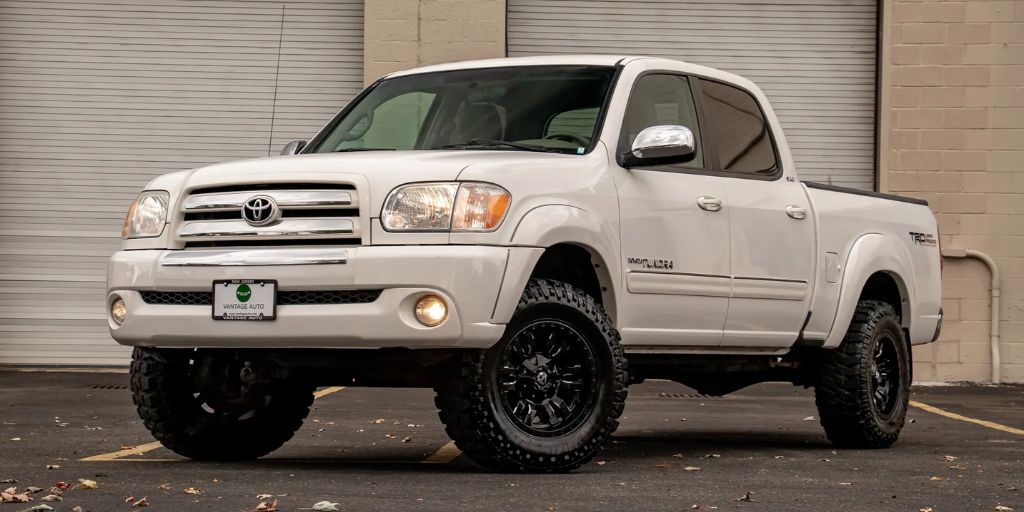
Despite Toyota’s strong reputation for reliability, this glaring oversight shattered buyer confidence—especially among those who expected a “Toyota” to outlast its American competitors.
We’re including the 2001–2005 Tundra on this list not because of drivetrain failure—but because no amount of engine reliability matters if the frame can’t hold it all together. This truck is a cautionary tale: even the best engines can’t save a vehicle from a rusted backbone.
Today, many early Tundras are off the road not because they wore out, but because they literally fell apart underneath. That’s why, despite its many strengths, it deserves a place on this list of trucks that didn’t last five years—for reasons you couldn’t even see coming.
What separates a truck that works for decades from one that barely survives a few years? As we’ve seen, the answer lies in design priorities, engineering philosophy, and real-world resilience.
The best trucks weren’t built for flash or fast sales—they were built with long-term durability in mind. And the worst? Often, they looked the part but couldn’t back it up when the miles piled on or the loads got heavy.
Also Read: 5 Pickups With Free Roadside Tire Changes and 5 Without Tire Aid

